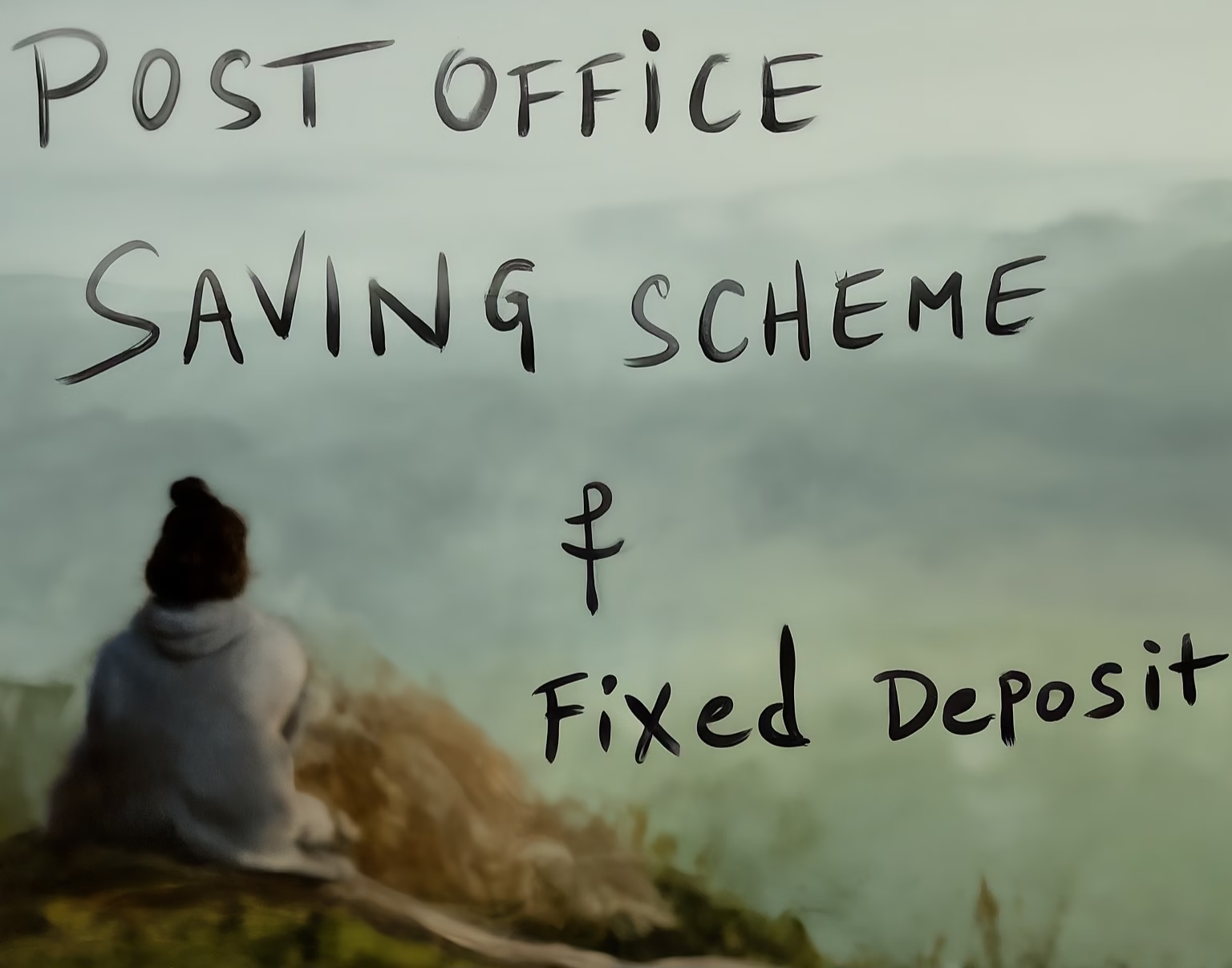In a world full of market volatility, many Indian investors still prefer safe and guaranteed investment options. Among the most popular choices are Post Office Saving Schemes and Bank Fixed Deposits (FDs). Both are trusted, low-risk avenues where investors can park their hard-earned money while earning decent returns. But with changing interest rates and new government updates in 2025, the big question arises: Which option is better – Post Office Saving Schemes or Bank Fixed Deposits?
Let’s explore both options in detail, compare their benefits, and help you decide which one suits your financial goals.
Also Read: Best Amazon Products in the Market: A Complete Guide
What Are Post Office Saving Schemes?
Post Office Saving Schemes are government-backed investment options designed to encourage savings among citizens. They are considered extremely safe because they carry a sovereign guarantee, meaning the government assures the repayment of both the principal and interest.
Popular Post Office Schemes in 2025
Some of the most sought-after post office saving options include:
- Post Office Savings Account – Works like a regular bank savings account.
- Time Deposit (TD) – Similar to a bank FD with fixed tenures of 1, 2, 3, or 5 years.
- Monthly Income Scheme (MIS) – Provides steady monthly income.
- Senior Citizen Savings Scheme (SCSS) – Tailored for retirees, offering higher interest.
- National Savings Certificate (NSC) – Popular for tax benefits under Section 80C.
- Kisan Vikas Patra (KVP) – Doubles the investment within a fixed period.
- Public Provident Fund (PPF) – Long-term investment with tax-free returns.
Interest Rates on Post Office Schemes
As of 2025, post office interest rates are revised quarterly by the government. They typically range between 4% and 8.2%, depending on the scheme chosen. Long-term schemes like PPF and SCSS usually offer higher returns compared to regular savings accounts.
Benefits of Post Office Saving Schemes
- Government-backed safety with zero default risk.
- Decent returns compared to regular savings accounts.
- Tax-saving benefits on select schemes like PPF, NSC, and SCSS.
- Wide accessibility, especially in rural areas where banks may be limited.
What Are Bank Fixed Deposits (FDs)?
Bank Fixed Deposits, often called FDs, are one of the oldest and most popular saving instruments in India. They are offered by both public and private banks, and allow investors to deposit a lump sum for a fixed period at a pre-determined interest rate.
Features of Bank FDs
- Fixed tenure ranging from 7 days to 10 years.
- Guaranteed returns with no market risks.
- Option for cumulative or non-cumulative payouts (monthly/quarterly/annually).
- Loan or overdraft facility against FD.
Current FD Interest Rates in 2025
In 2025, bank FD rates vary depending on the bank and tenure. On average:
- Public Sector Banks: 5.5% – 7%
- Private Sector Banks: 6% – 8%
- Senior Citizen FD Rates: Additional 0.25% – 0.75%
Advantages of Bank Fixed Deposits
- Higher liquidity compared to post office schemes.
- Widely available both in urban and semi-urban areas.
- Flexible tenure and premature withdrawal facility (with penalty).
- Additional benefits for senior citizens.
Key Differences Between Post Office Saving Schemes and Bank FDs
| Feature | Post Office Schemes | Bank Fixed Deposits |
|---|---|---|
| Safety | 100% government-backed | Depends on bank stability (insured up to ₹5 lakh under DICGC) |
| Interest Rates | 4% – 8.2% | 5.5% – 8% (varies by bank) |
| Liquidity | Limited (lock-in applies in many schemes) | Higher (premature withdrawal allowed with penalty) |
| Accessibility | Strong presence in rural areas | More accessible in cities and towns |
| Tax Benefits | Available in select schemes (PPF, NSC, SCSS) | Available in 5-year tax-saving FD |
| Senior Citizen Advantage | SCSS offers attractive returns | Higher FD rates for senior citizens |
Which Option is Better for Senior Citizens?
Senior citizens generally look for safety, steady income, and tax savings. Both options serve them well, but:
- SCSS (Senior Citizen Savings Scheme) offers one of the highest risk-free returns.
- Bank FDs provide flexibility and additional interest, but not always as high as SCSS.
For retirees depending on monthly income, Post Office MIS and SCSS may be better choices.
Which Option is Better for Young Investors?
Young investors often seek long-term growth with tax benefits.
- PPF (Public Provident Fund) in the post office is excellent for wealth creation over 15 years.
- Bank FDs, while safer, may not beat inflation in the long run.
Thus, a young professional may benefit more from post office long-term schemes than short-term FDs.
Factors to Consider Before Investing
Investment Goals
If you want long-term wealth creation, PPF and NSC stand out. For short-term parking, FDs are better.
Risk Appetite
Both are low-risk, but post office schemes are sovereign-backed, offering higher safety.
Lock-in Periods
Bank FDs offer more flexibility, while post office schemes often have fixed lock-ins.
Tax Efficiency
Post office options like PPF, SCSS, and NSC provide Section 80C deductions. Bank FDs provide tax benefits only for 5-year tenure deposits.
Expert Insights on 2025 Investment Trends
Financial experts suggest a balanced approach in 2025. With inflation hovering around moderate levels and interest rates slightly higher than the past few years, investors should mix both options:
- Use Post Office Schemes for safe, long-term savings.
- Use Bank FDs for short-term needs and liquidity.
This way, you get the best of both worlds.
FAQs on Post Office Saving Schemes vs Bank FDs
Q1. Are Post Office Saving Schemes safer than Bank FDs?
Yes, post office schemes are fully government-backed, while bank FDs are insured only up to ₹5 lakh.
Q2. Which gives higher returns in 2025 – Post Office or FD?
It depends on the scheme. Some post office options like SCSS and PPF offer better returns, while private bank FDs may also provide competitive rates.
Q3. Can I break a Post Office Time Deposit before maturity?
Yes, but only after 6 months, and with reduced interest.
Q4. Do bank FDs have tax benefits?
Yes, but only 5-year tax-saving FDs qualify under Section 80C.
Q5. Which is better for monthly income?
Post Office Monthly Income Scheme (MIS) is ideal, but bank FDs with monthly payout options also work.
Q6. Should I invest in both?
Yes, diversifying between both ensures safety, liquidity, and steady returns.
Where Should You Put Your Money in 2025?
The debate of Post Office Saving Schemes vs Bank Fixed Deposits has no one-size-fits-all answer. If safety and government guarantee are your top priorities, post office schemes win hands down. But if flexibility, liquidity, and quick accessibility matter to you, bank FDs may be more suitable.
In 2025, the ideal approach is to balance your portfolio—use post office schemes for long-term, risk-free savings and bank FDs for short-term needs. By combining both, you can enjoy stable, tax-efficient, and safe returns without compromising on liquidity.
**Disclaimer: **Any pricing information shown or mentioned in this article was accurate at the time of article posted. later may have since changed. **














Join Us on Social Media!
Stay updated with the latest from EasyBuzz. Connect with us: